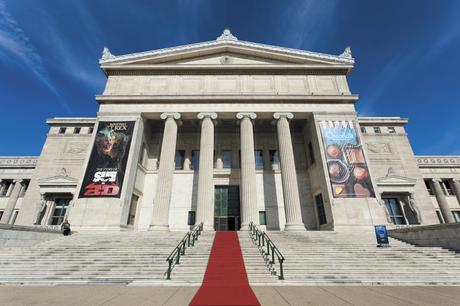
A museum is typically a house of collection of artefacts or art, which are put on display for the public to view. Besides being open for everyone, museums might also offer guided tours, special events and lectures specifically designed to teach and share knowledge with the local community.
Even though images of UK's most renowned museums, such as the British museum might come to your mind when you think of a museum, you can start your own museum of any size at any moment in time and devote all the collections to any subject that you wish to.
You can either open a formal museum or you can start a small museum shop. But, what do you need to know to start your own museum? Here are a few tips that you need to bear in mind.
Before you start up your own museum, write a one page description or a business plan about it. In this plan you'll be outlining the type of museum you'll be opening. Will it be a science centre, an art museum or local history? It must also include the location, its size and the different types of collections you'll be displaying for the public. Work out from where you'll find the pieces to display and accordingly plan a proper budget for the acquisition of your museum collections, if required. You can even start it small and arrange your personal collection with signs, thereby providing accompanying literature to educate your visitors about the history of those items.
If you're looking to create a museum on a large scale full of art and artefact displays, then it's better to seek help from an investor or sponsor. There are several people out there who completely understand the technology and work involved in setting up a museum. If you're able to find the right person, then probably they'll support you with your project or simply give you advice in order to reorient your displays for the museum. It is vital for you to properly communicate and listen to them, because ultimately they're your investors or sponsors.
- Visit a few museums before you start one
As a part of opening a museum, you should at least visit ten to twenty different types of museums that you're interested in starting. Take down notes as well as loads of images. What is their yearly attendance? For how much do they sell their ticket? Find out all the possible operating expenses and you can even make use of various resources that provide you with such information. Notice even the tiniest of details, such as "what does the floor staff wear?", "do they have a museum shop?", "what type of ticketing system are they using?", "how do they judge their footfall?" etc. If it's possible for you, join a museum organisation and get involved in all their events. This way, you can use all the acquired knowledge in your community and show them all the findings of your museum visits.
You will need to determine whether you need any staff to help you run the museum. If so, then how many employees do you need to hire. Make a list of all the tasks that are to be finished for the regular operation of your museum. Likewise, figure out which tasks can be competed on your own and how many additional tasks are remaining for your volunteers or employees to complete. Note that either you or the museum curator will be held responsible for acquiring all the artefacts and setting up displays. But, you'll also require someone to answer all the questions, lead tours, sell tickets and maintain the museum on a regular basis.
This is the most crucial step that you'll have to endure if you're thinking of opening your own museum. You'll have to search for a location that is centrally situated such that your visitors can access it easily. For that matter, you can even open your museum in a commercial building that you already own or else open a private museum in your own house maybe. However, check the zoning restrictions in your city or town- wherever you reside and make sure that you can open and operate your museum business at your chosen location with complete ease.
Starting a museum is not everyone's cup of tea because it can easily burn a hole in your pocket. As a general rule of thumb, the exhibition space is always half of the overall space- for instance a 4500 square ft. exhibition area would become a 9000 square ft. building. So, you need to make sure that you're doing all the numbers so as to create a proper budget. Also, do not forget those additional operating expenses, such as utilities, salaries, maintenance, etc. Always think, "Can you earn at least 50% of your yearly expenses" and accordingly create your business plan. Be conservative with your annual attendance figures, as too many museums get into trouble by using optimistic attendance figures. To accurately judge the attendance and footfall you can make use of retail people counting systems, as they provide you with accurate estimates of visitors. Attendance rate in the 2 nd and 3 rd year of the new museum is likely to fall off 20% to 30% (or even more). So, make sure that you plan the third year's operation accordingly.
Once you've prepared a proper budget and decided the location, the next step is to register your museum as a business and request for a business license from an authorised person. Set up a business account in order to process all the payments and make the necessary museum business purchases. You can even seek assistance for an accountant or professional financial planner with the tax planning and structuring of your museum's operation with corporate officers, if required.
After registering the museum, you need to apply for local grants as well as federal funding to help you with the start-up expenses. If your museum qualifies, you might be able to receive state funding from renowned organisations. You might also be able to acquire business financing from banks.
When you have finally started your museum, how would you know that people are actually aware of its existence? This is when the need to share your vision arises, which in other terms is known as branding of a museum. You need to let people know that you've opened this museum of yours and why they should be visiting it. When you'll start with its design process, you'll have to walk the potential sponsors or investors through your preview facility and discuss about the facility, exhibition plans, etc. Likewise, you should involve them in building the architecture and exhibition design. Try not making any false promises of naming opportunities and if you wish to make any, bear in mind that you'll have to reach the capital campaign goals.
Essentials of Museum MarketingFor most of us marketing is a very big term. But, what is marketing in the context of a public-facing organisation such as a museum? What does museum marketing even mean when you don't have a consistent or large budget and a dedicated marketing department?
Well, marketing is not about selling stuff to people, which they don't really like or need. It's not even about creating demand amongst the customers or changing their perceptions.
Marketing is all about communicating the valuable and unique offers that you've got for people who are ready to listen. More importantly, it is about letting your existing and potential target audience know what great things you're doing.
What marketing basically does is connects a consumer who is ready to purchase a product that suits his/her needs. That is all. Thus, ultimately, marketing is all about communication.
So, what are the essentials that you need to know in order to market your museum? Here are a few essential things and if you learn and live by them, you'll perhaps have an easier time marketing your museum and what all it exhibits.
You actually need to know your audience properly, the ones who know and like you. But, be cautious to distinguish your target audience from the ones that you'd like to have.
- Once you know who your audiences are, think of everything from their perspective:
No matter what you do, it is always vital to think of stuff from your audience's perspective and ensure that the marketing conversation is with them. Likewise, you need to make sure that your message is catchy and something that they're ready to hear.
- Whatever you do should be appealing:
Always keep in mind, the things that you do, such as programs, exhibits, fundraisers, etc. is appealing enough and valued by your target audience. None of the marketing tactics is going to make anything interesting for them, until they aren't really interested in it.
- Find out how they receive the information and talk to them:
Through which source is your audience getting all the information about your museum? Are they making use of social media? Are they taking in messages from transit signs and billboards? Always go to your audience instead of waiting for them to come to you. Also, see to it that you're going the extra mile to determine their behaviour.
Instead of investing in stuff that doesn't provide you with a better end result, why not spend your money in different media channels? Never pull your money in just one thing; rather think of complementary approaches to put across your message.
- Get people from your community involved:
Bring people whom you know from your community in and provide them the opportunity to help you out with their marketing efforts. They may just surprise you with what they've got and help you connect with your targeted audience.
Local activities always tend to enrich and nurture goodwill. It's likely to be the greatest source of commitment and support for your organisation. So, never snub or denigrate the local community, no matter how greener the pastures look on the other side.
- Recognise whether other organisations are both collaborators and competitors in your community:
You'll have to work with other organisations as much as possible, because all ships do rise with the tide. But, see to it that you recognise that you have to occupy a unique space in the minds of your audience. As such, you need to be careful whilst differentiating your offers from theirs and this is especially vital if there's a dominant player and you're not. Never be the "me too" organisation. Always stand out on your own and stake your territory, which you can own completely.
- Try things you haven't tried before:
Do not stop learning and experimenting, because new ways to connect with people is always being devised. Also, allocate some of your budget to try some of them and keep the ones that work in your arsenal. In the long run, the extra spending on learning and experimenting will surely save you a lot as the most effective methods will shine through and deliver a bang for the buck.
- Evaluate all Your marketing efforts:
You have to determine what has worked well previously and with what group of constituents. Conduct surveys and ask questions like, "how did you find out about us?", "what pulled you to this show?", "how did you come across this program?" All this information is like a gold mine to help you plan for your future activities. Also, find out ways of keeping a track of your marketing whenever possible.
Above all, the most important thing that you need to know is "no one buys what you sell; instead they buy what is of value to them." This is a marketing axiom. You need to understand this, act according and you'll surely win.
This is just the beginning. But if you'll follow these essentials, they'll help you in performing a better job for your museum and others who benefit from its existence.

